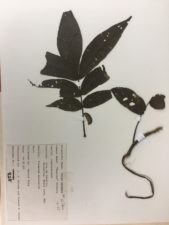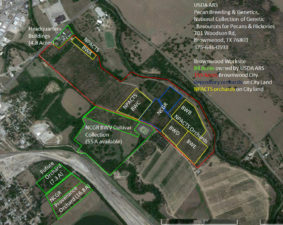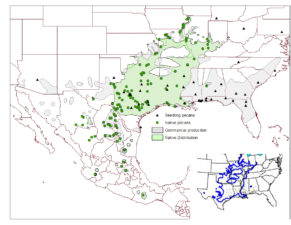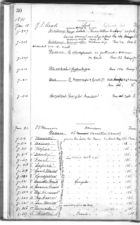
Dennis Ring
I met Dennis Ring in the late 1970s when we were both graduate students at Texas A&M University. Dennis was working on casebearer (Acrobasis nuxvorella) and had seen evidence of infestation in nuts on trees of the Eli Whiteley memorial planting at Texas A&M University. I knew that planting was a hybrid swarm that included...
Read more
Speaking of Family Trees…
New tools will help us understand and use some of our old favorite cultivars more efficiently. I had the chance to judge the Pecan Show in Brenham on Nov. 20, 2019. Kara Matheney, Washington County Extension Agent, and her Pecan Committee did a good job bringing in samples from Washington and Austin Counties in an...
Read moreFamily Trees: The Next Generation
The USDA-ARS Pecan Breeding & Genetics Program is at a transition point. In the past three Pecan South articles, we looked at the collection of living inventories that has grown from a “breeder’s collection” to represent global Carya populations, forming the National Collection of Genetic Resources for Pecans and Hickories (NCGR-Carya). Using that collection, cooperative...
Read more
Family Trees: Generations & Propagations
Time gets divided into generations in our families and the social context of our culture. Some generational generalizations (Baby Boomers, Gen Xers, Millennials, Gen Z) are media hype, but some patterns are appropriate to recognize to maintain what functions well in our communities. The culture of trees carries the previous generations’ fingerprints in the even-aged...
Read more
Family Trees: Roots & Resilience
The U.S. pecan industry is young compared to most tree crops. The pecan is an unusual example of a North American native tree that has become a worldwide crop. The early pecan industry grew out of the native forest with several factors contributing to its historic development: a nutritious, high-quality product that was in demand;...
Read more
Family Trees: Looking back, Going forward
Every grafted pecan tree is full of stories that can be confusing to someone not involved in the pecan industry. I want to tell the origin stories of three cultivars: ‘Western’ (the most important scion cultivar for the western region), ‘Riverside’ (an important rootstock cultivar for the West), and ‘Longfellow’ (which has recently been confirmed...
Read more